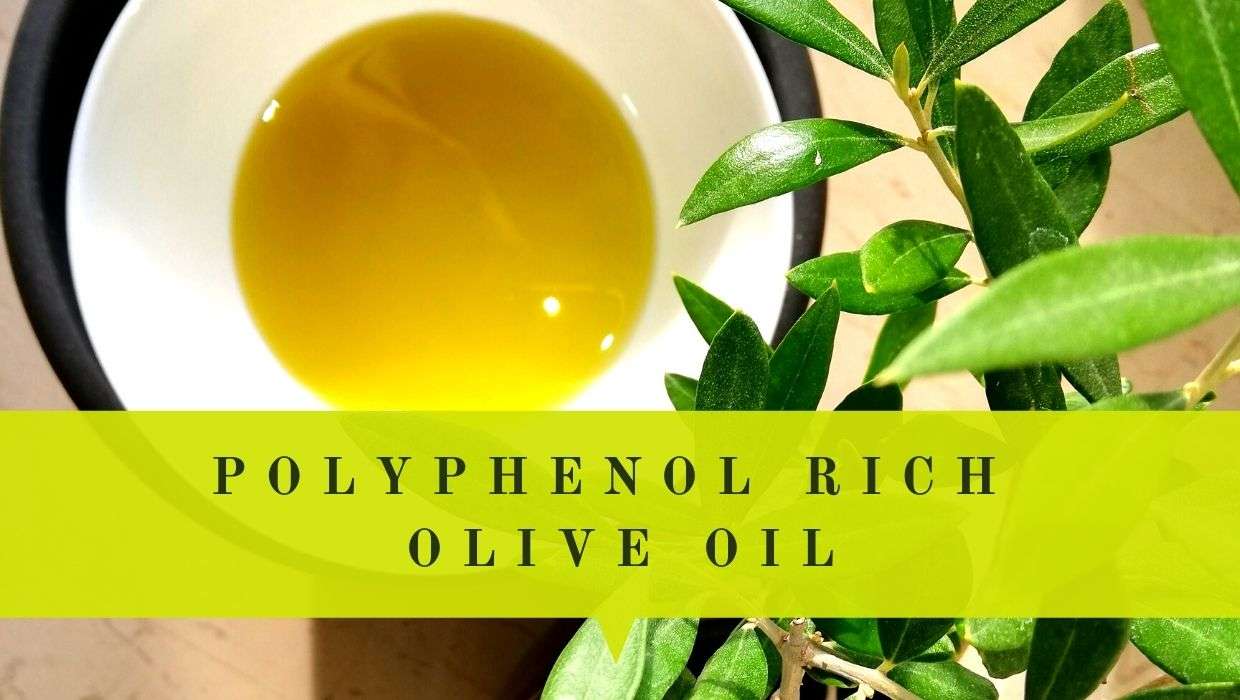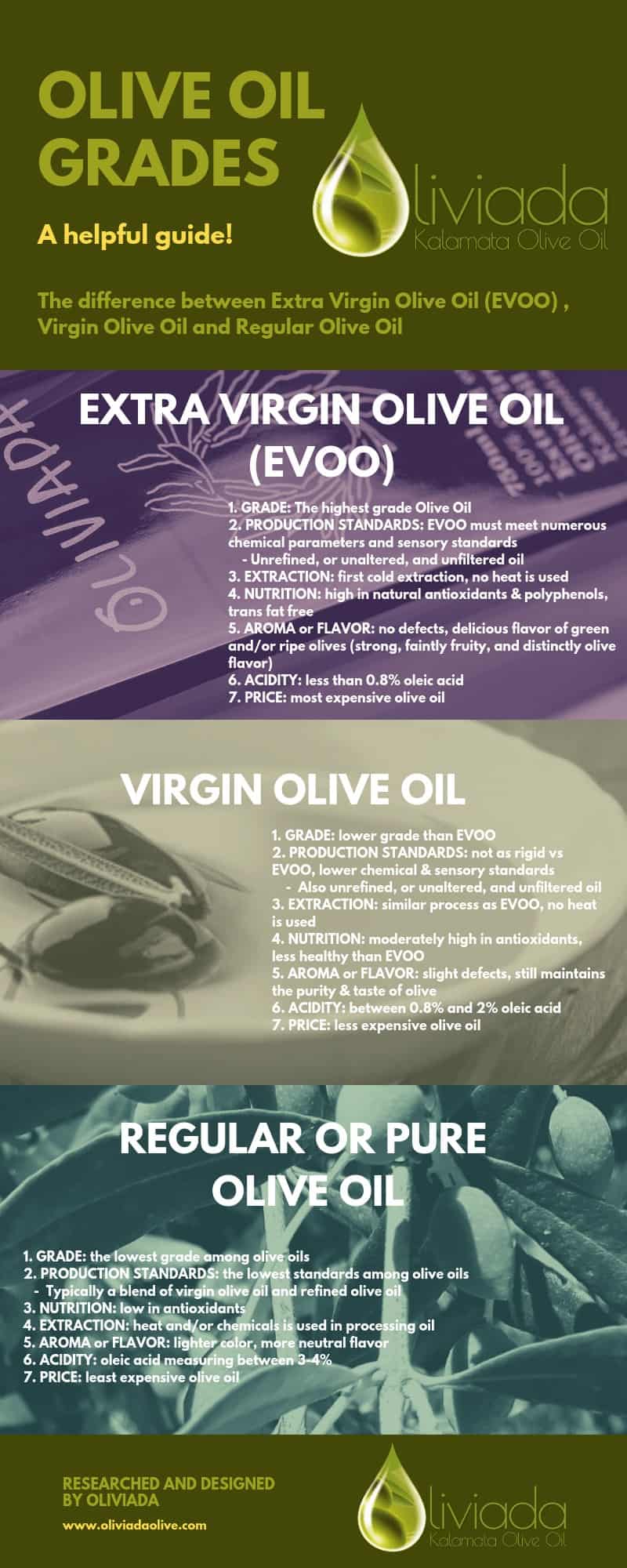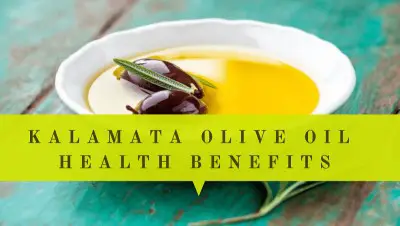This post may contain affiliate links which may generate a small commission from clicks that result in a purchase.
Despite the fact that olive oil is regularly promoted as one of the healthiest oils, what’s the difference between extra virgin olive oil vs olive oil is the most frequent question I receive. Although different species of olives grown in different countries can certainly create different tasting olive oils, the overall quality of finished oil is determined by the process used in producing it.
As a reason to clarify the difference between extra virgin olive oil vs olive oil, I collected key information and created a helpful guide for you to find out the uniqueness between olive oil grades.
Extra Virgin Olive Oil vs. Olive Oil
Overall, the olive oil grade is highly dependant on the type of olive fruit, the production process used to extract the oils, the acidity, nutrition, and pricing. In this article, I have listed 7 main characteristics to differentiate extra virgin olive oil vs olive oil. These could help you to understand better the core difference of olive oil grades.
Comparison table: Extra Virgin Olive Oil vs Olive Oil
-
GRADE = QUALITY
In short, the olive oil grade means quality. So, extra virgin olive oil (i.e. EVOO) is the highest grade olive oil, as well, the highest quality. There as, regular olive oil is the lowest grade among olive oils.
-
PRODUCTION STANDARDS
Extra virgin olive oil always must meet numerous chemical parameters and high sensory standards in accordance with industry standards. However, the production standards are much lower for regular or simple olive oil.
In terms of purity of the oil, extra virgin olive oil is unrefined, or unaltered, and unfiltered oil. On another hand, regular olive oil is typically a blend of virgin olive oil and refined olive oil.

-
EXTRACTION PROCESS
Extra virgin olive oil is the least processed of the oils and is extracted from olive fruits solely by mechanical means. In addition, no excessive heat is used in the extraction process. In other words, this type of extraction is known as the first cold extraction.
Opposite to regular olive oil, heat and/or chemicals are used in processing oil.
-
NUTRITION
Because of the way extra virgin olive oil is made, it retains the highest quality among other oils. It keeps high-level natural antioxidants and polyphenols, vitamins, and minerals (trans-fat-free) due to its mechanical processing. EVOO has loads of proven health benefits and is a valuable ingredient to be added to your diet. The quality olive oil is compatible with keto diet, vegan, paleo, and whole30 diets.
Hence, regular olive oil loses its nutrition while heated or processed in a chemical way, and is low in antioxidants and other nutrients. So, refining olive oil strips it of its vitamins, polyphenols, and other natural ingredients.

-
AROMA / FLAVOR
According to official testing protocols, extra virgin olive oil has no defects in aroma or flavor. Though it has the strongest flavor and aroma vs other oils. EVOO has a delicious flavor of green and/or ripe olives (strong, faintly fruity, and distinctly olive flavor).
However, a simple olive oil is a more neutral flavor and a lighter color.
-
ACIDITY
Acidity is a very important feature when identifying the best olive oil with an acidometer. So, extra virgin olive oil acidity is less than 0.8% oleic acid. There as, the oleic acid measure is between 3-4% for regular olive oil.
-
PRICE
Extra virgin olive oil (EVOO) is the most expensive olive oil because of the higher costs at each stage of production. Thus, regular olive oil can be twice or 3 times cheaper comparing a good quality EVOO since the process is less complicated and it has to meet lower chemical standards.

Final thoughts
Nutrition experts and scientists agree extra virgin olive oil is the highest quality and most expensive olive oil available that must meet rigorous standards. Due to mechanical processing, it is rich in antioxidants, vitamins, and other natural nutrients. This makes it a more healthy extra virgin olive oil vs olive oil but also makes it more expensive.
Since extra virgin olive oil has a perfect flavor with no flaws, it could be added to your daily meals to enrich not only taste but boosts your well-being.

Hi, I’m Vangelis Kleftogiannis, the founder of Oliviada and an established olive oil expert from Kalamata, Greece. My expertise isn’t just in producing quality Extra Virgin Olive Oil, but also in the cultivation and care of olive trees themselves. I am deeply committed to sharing my knowledge and know-how, helping others understand the intricacies of olive tree growing and the creation of quality olive oil.




I have been wanting to know this explanation and comparison for
years. Thank you for clarifying this question.
Hi Janey, thank you for your comment. I am glad it was useful! Best of luck! :)